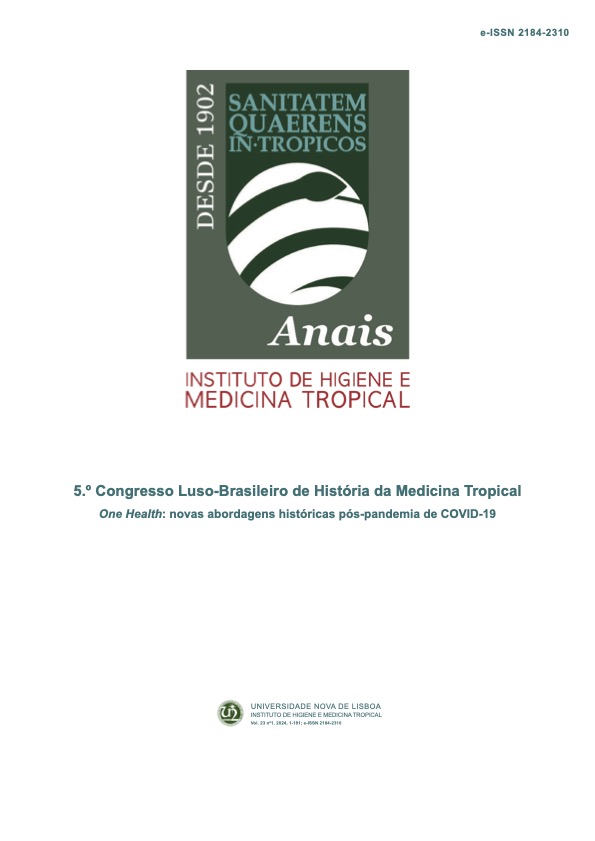Vamos, senhores: em nome da civilização calcem-se! A campanha contra o pé descalço na primeira metade do século XX
Resumo
Desde 1928 que a Liga Portuguesa de Profilaxia Social protagonizou aquela que viria a ser uma das suas campanhas mais emblemáticas e duradouras, a luta contra o “indecoroso, inestético e anti-higiénico hábito do pé descalço”. A iniciativa surgia no âmbito da tomada de consciência da elevada mortalidade, deformações e amputações realizadas aos membros inferiores, provocadas pelo tétano, a que os pés desnudados estavam continuamente sujeitos. O objetivo deste artigo passa por analisar o modo como foi abordado o problema do pé descalço, tanto pela Liga como pelas autoridades municipais, no contexto político-social da primeira metade do século XX. Simultaneamente, pretendemos analisar os fatores que explicam o acolhimento e/ou as resistências sociais que se formaram em torno do projeto de erradicação deste problema de saúde pública, no período destacado1 . A principal fonte de informação consultada foi o Fundo da Liga Portuguesa de Profilaxia Social, sediado no Arquivo Distrital do Porto, que guarda um imenso núcleo documental sobre as iniciativas da Liga a este respeito. Através de conferências, folhetos, cartazes e artigos nos jornais, a Liga influenciou decisivamente os poderes políticos a tomar medidas contra este problema. Ao mesmo tempo, verificamos que o dinamismo desta instituição teve um papel importante na educação e sensibilização da população para a adoção de práticas de higiene e saúde pública. O problema do pé descalço adquiriu uma dimensão que extravasou o campo da saúde pública. Foi encarado igualmente como um problema socioeconómico, civilizacional e até patriótico, o que explica o grande acolhimento que a campanha teve nos inícios do século XX em Portugal.
Downloads
Referências
Heras B, Alves J. Fotografia e Profilaxia Social. A visão do «outro» nas campanhas da LPPS. CEM: Cultura, Espaço e Memória [Internet]. 2015; 6: 125-144. Disponível em: https://ojs.letras.up.pt/index.php/CITCEM/article/view/4748/4434
Vieira I. «Em Prol do Bem Comum». O contributo da Liga Portuguesa de Profilaxia Social para a educação higiénica no Porto (1924-1960). CEM: Cultura, Espaço e Memória [Internet] 2014; 5: 101-116. Disponível em: https://ojs.letras.up.pt/index.php/CITCEM/article/view/4786/4468
SNS 24 [Internet] Tétano. Disponível em: https://www.sns24.gov.pt/tema/doencas-infeciosas/tetano/#como-se-transmite
OMS – Organização Mundial de Saúde [Internet] Tétanos. Disponível em: https://www.who.int/es/news-room/fact-sheets/detail/tetanus
Liga Portuguesa de Profilaxia Social. O Pé Descalço. Uma vergonha nacional que urge extinguir. Porto: Imprensa Social; 1956.
Heras, Beatriz de las, Jorge Alves. 2015. “Comunicação visual e sanitarismo entre as duas Grandes Guerras – os cartazes da Liga de Profilaxia Social (Porto-Portugal”. In A Grande Guerra (1914-1918): Problemáticas e Representações, 271-281. Porto: CITCEM
Arquivo Distrital do Porto. Fundo da Liga Portuguesa de Profilaxia Social, Campanha “O Pé Descalço” (1928-1956). Disponível em: http://pesquisa.adporto.arquivos.pt/details?id=1702801
Ramos, Luís A. de Oliveira. História do Porto. Porto: Porto Editora; 1994

This work is licensed under a Creative Commons Attribution 4.0 International License.





